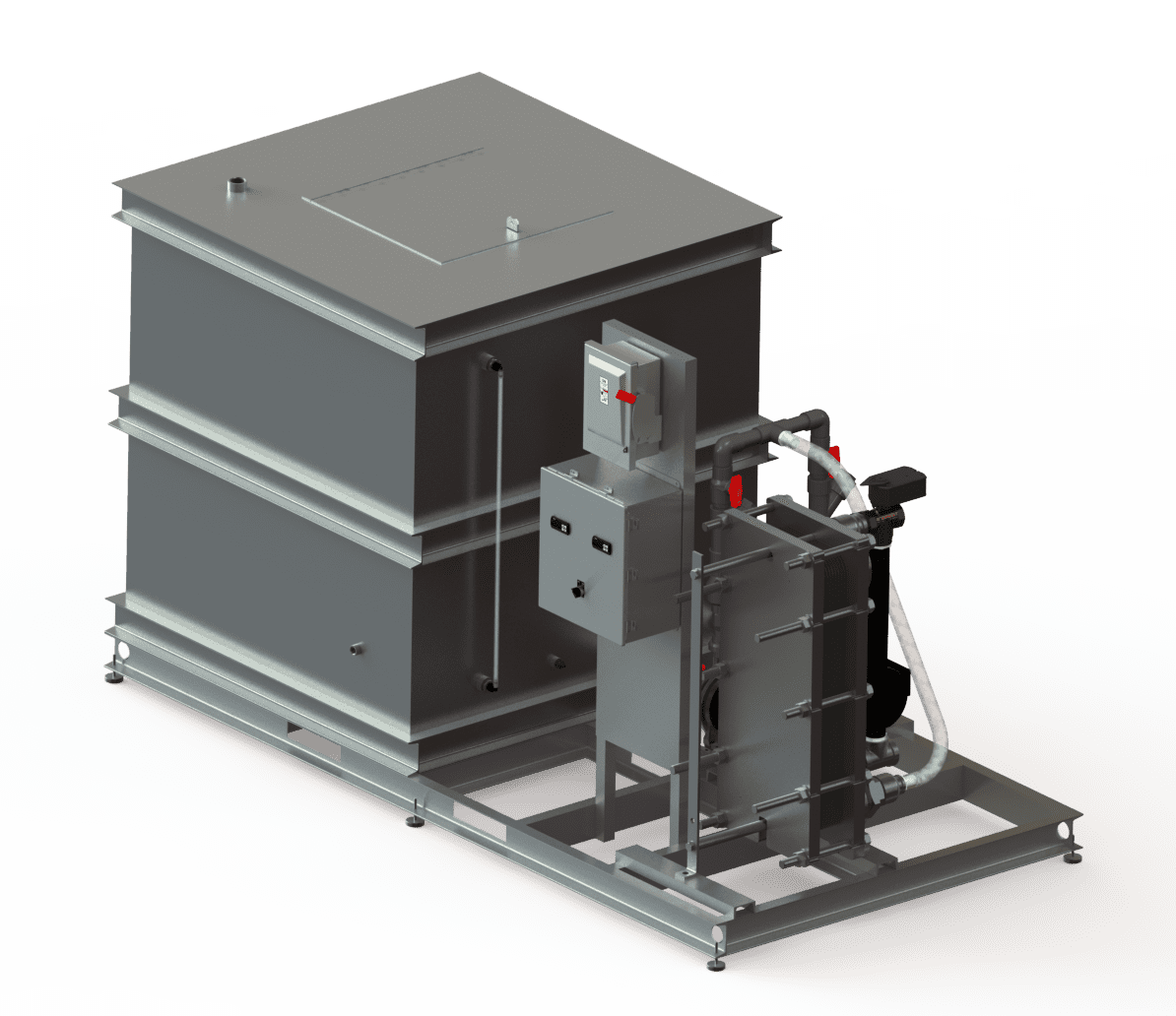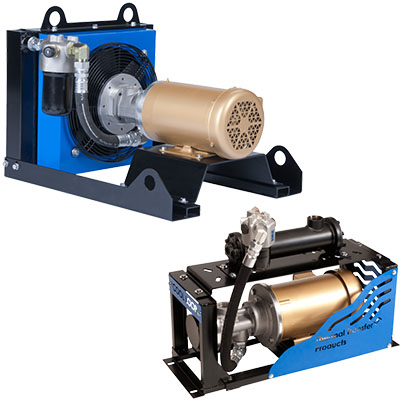The Function of Heat Transfer Solutions in Sustainable Power Solutions for the Future
Heat transfer systems are essential in the quest for sustainable energy options. They enhance thermal energy management, boosting the effectiveness of renewable modern technologies. By using mechanisms like conduction, convection, and radiation, these systems minimize energy losses. Their duty in solar thermal and geothermal applications is particularly significant. As advancements arise, the potential for additional advancements elevates important inquiries regarding future energy techniques. What advancements will form the landscape of sustainable power?
Comprehending Heat Transfer Solutions

The Relevance of Thermal Energy Administration
Effective thermal power management is vital for maximizing power performance and minimizing waste in numerous systems. By managing temperature level and optimizing Heat transfer processes, organizations can noticeably decrease power intake and functional prices. Efficient monitoring includes the application of innovative innovations and techniques that monitor and control thermal conditions within systems, guaranteeing that energy sources are made use of successfully. Additionally, proper thermal energy management adds to minimizing greenhouse gas discharges, lining up with international sustainability objectives. It additionally improves system integrity and efficiency, causing boosted product quality and longer devices life-span. Ultimately, focusing on thermal power monitoring is an essential step towards developing extra lasting energy services and fostering a responsible approach to energy consumption in commercial and domestic contexts.
Applications of Heat Transfer in Renewable Resource
While various renewable power sources promise sustainability, the efficient application of Heat transfer plays an essential duty in their performance. In wind energy systems, Heat transfer is made use of for turbine element air conditioning, improving performance and long life. Geothermal power relies upon efficient Heat exchange in between the earth's subsurface and the liquid circulating in the system, making best use of power extraction. Biomass power processes also take advantage of Heat transfer, as it assists in converting organic products into usable fuel with pyrolysis and gasification. Furthermore, in hydropower, maintaining optimal temperature levels in storage tanks can enhance energy output. Each of these applications shows the critical importance of Heat transfer systems in boosting eco-friendly energy technologies, inevitably adding to an extra sustainable energy future.
Enhancing Solar Thermal Power Effectiveness
As solar thermal power systems remain to evolve, boosting their efficiency has ended up being crucial for maximizing power outcome. Breakthroughs in Heat transfer modern technologies, such as improved thermal storage space materials and innovative Heat exchangers, play a significant function in boosting efficiency. By making use of sophisticated materials that have premium thermal conductivity, systems can move and capture Heat more effectively. Furthermore, integrating monitoring systems that adhere to the sunlight's path assurances that enthusiasts get excellent solar exposure throughout the day. Making use of nanotechnology in solar absorbers can additionally increase power absorption prices. Including computerized control systems aids manage and control temperatures energy circulation successfully, leading to minimized losses and boosted overall system performance. These improvements lead the way for even more sustainable solar thermal power options in the future.
Geothermal Home Heating: A Lasting Service
Geothermal home heating offers a viable choice for lasting energy, supplying significant environmental benefits with lowered greenhouse gas discharges. Its efficiency and cost-effectiveness make it an attractive choice to typical heater. However, challenges connected to implementation must be resolved to maximize its potential impact.
Environmental Advantages of Geothermal
Although traditional heating approaches contribute significantly to greenhouse gas discharges, geothermal home heating presents an engaging alternative that reduces ecological impact. By taking advantage of the Earth's internal Heat, geothermal systems make use of a renewable resource source, noticeably reducing reliance on nonrenewable fuel sources. This approach produces minimal carbon discharges, making it a cleaner choice for business and household heating. In addition, geothermal systems advertise power effectiveness, as they need much less power compared to standard home heating systems. DVS Heat Transfer Systems. The use of geothermal energy also helps in reducing air pollution, enhancing neighborhood air quality and public wellness. As a sustainable solution, geothermal home heating supports climate change mitigation efforts, placing itself as an essential component in the shift towards a greener future
Performance and Cost-Effectiveness
How does geothermal home heating gauge up in regards to efficiency and cost-effectiveness compared to typical heater? Geothermal home heating demonstrates remarkable performance, usually achieving a coefficient of performance (POLICE OFFICER) of 3 to 5, meaning it generates 3 to five systems of Heat for every single system of electricity taken in. This efficiency translates into reduced operating expense, especially in regions with stable geothermal sources. Initial setup costs can be greater than traditional systems; however, long-lasting savings on energy costs and decreased maintenance expenses can counter these upfront investments. Furthermore, lots of governments incentivize geothermal systems via rebates and tax credit scores, enhancing their cost-effectiveness. In general, geothermal heating becomes a financially feasible and sustainable option to more traditional home heating services.
Execution Obstacles and Solutions
Many challenges can restrain the widespread implementation of geothermal home heating systems, in spite of their clear benefits as a sustainable energy remedy. High preliminary setup costs commonly hinder investors and house owners, making funding a substantial obstacle. In addition, the geographical constraints of ideal geothermal websites limit access in certain regions. Neighborhood guidelines my response and allowing procedures can page additionally make complex project development, resulting in hold-ups. Public understanding and understanding of geothermal systems continue to be reduced, preventing acceptance. To deal with these difficulties, targeted education and learning projects can boost open secret, while federal government incentives could relieve economic concerns. Working together with regional authorities to simplify guidelines might facilitate smoother task approvals, inevitably advertising the fostering of geothermal home heating as a feasible, lasting power alternative.
Technologies in Heat Transfer Technologies
Innovations in Heat transfer modern technologies play an essential duty in improving power performance and sustainability. Advanced Heat exchangers and phase modification materials go to the center of these developments, supplying substantial enhancements in thermal management. These modern technologies not just optimize power use yet additionally add to reducing ecological effect in different applications.
Advanced Heat Exchangers
Advanced Heat exchangers play an essential duty in improving energy performance across different applications in lasting power solutions. These tools assist in the transfer of Heat between two or more liquids, substantially minimizing energy intake in processes such as industrial heating, air conditioning, and power generation. Developments in products and style, such as using nanofluids and compact setups, have caused boosted thermal performance and reduced dimension requirements. In addition, developments in electronic monitoring and control systems enable for optimized procedure, further boosting performance. By lessening waste Heat and making the most of power recovery, progressed Heat exchangers add to reduce carbon impacts and support the shift towards eco-friendly technologies. Their continued growth is vital for accomplishing international energy sustainability goals.
Phase Change Materials
The combination of stage modification products (PCMs) into Heat transfer modern technologies represents a considerable advancement in energy administration and performance. PCMs soak up and launch thermal energy throughout their stage adjustments, enabling effective temperature level law in building products and energy systems. By keeping excess Heat during top periods and releasing it when demand increases, PCMs add to pack moving and energy conservation - DVS Heat Transfer Systems. This capability boosts the performance of renewable energy systems, particularly in solar thermal applications. Additionally, PCMs can enhance the thermal convenience of interior settings, reducing reliance on conventional heating and cooling techniques. As advancements in PCM formulas continue to emerge, their function in sustainable energy remedies is positioned to grow, offering appealing avenues for future research study and application

Future Leads for Heat Transfer in Sustainable Power
As the need for lasting energy services remains to climb, the role of Heat transfer systems is coming to be increasingly important in forming future technologies. Developments in products and styles are expected to enhance efficiency in Heat transfer, lowering power losses in numerous applications. linked here The integration of advanced thermal storage systems, such as phase change materials and thermochemical storage, will enable far better administration of energy resources. Study into nanofluids and biomimetic Heat exchangers may even more enhance thermal performance. Moreover, the fostering of wise innovations will certainly permit for real-time monitoring and flexible control of Heat transfer procedures. These developments are poised to greatly add to the total performance and sustainability of energy systems, paving the means for an extra energy-efficient future.
Often Asked Concerns
Exactly How Can Individuals Apply Heat Transfer Systems at Home?

People can implement Heat transfer systems in your home by installing energy-efficient devices, making use of radiant heat, and maximizing insulation. These measures boost power efficiency, decrease expenses, and promote lasting practices in residential environments.

What Are the Expenses Related To Mounting Heat Transfer Solutions?
The expenses connected with installing Heat transfer systems vary commonly, normally incorporating devices, setup labor, and maintenance. Aspects such as system kind, home size, and regional policies considerably affect the general expenditure entailed.
Are There Government Incentives for Heat Transfer System Installations?
Government rewards for Heat transfer system setups differ by area and can include tax grants, credit scores, and refunds. These financial advantages aim to motivate fostering, eventually promoting power effectiveness and reducing ecological impact within areas.
Exactly How Do Heat Transfer Solutions Influence Power Bills?
Heat transfer systems notably influence power expenses by maximizing energy performance. By enhancing the transfer of Heat, these systems reduce power consumption, causing lower energy costs and developing an extra sustainable technique to power monitoring.
What Maintenance Is Required for Heat Transfer Equipments?
Maintenance for Heat transfer systems consists of regular assessments, cleansing of components, inspecting liquid levels, making sure correct insulation, and replacing worn components. These jobs assist preserve performance, stop break downs, and lengthen the system's functional lifespan.
These systems assist in the activity of thermal power from one medium to one more, making it possible for the transfer of Heat for energy, cooling, or home heating generation objectives. Geothermal power counts on effective Heat exchange between the earth's subsurface and the fluid distributing in the system, maximizing energy extraction. Additionally, geothermal systems promote energy efficiency, as they require much less energy contrasted to traditional heating systems. Advanced Heat exchangers play a necessary function in improving energy performance throughout different applications in lasting power services. Heat transfer systems significantly influence energy bills by optimizing power efficiency.